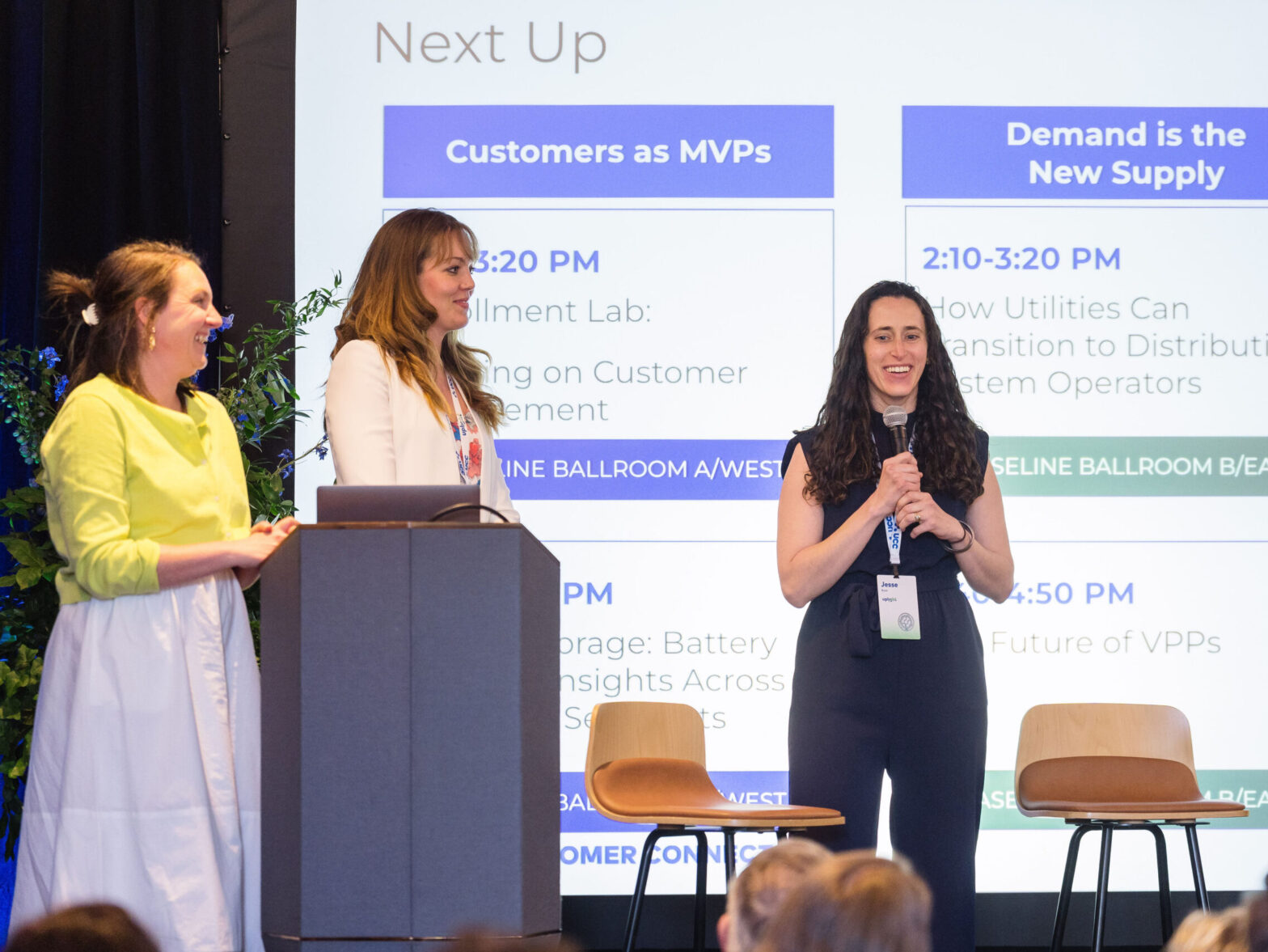This post was originally published on Tendril’s website. Tendril is now Uplight.
I recently had the opportunity to attend the American Council for an Energy Efficient Economy’s (ACEEE) 20th biennial Summer Study-an event that attracted a lively and eclectic group of industry influencers from utility folks and evaluators to researchers, policymakers and press.
During the conference I presented insights from a joint white paper I co-authored with our partners at ILLUME Advising. The paper, Teaching a New Thermostat New Tricks: Results from Four Runtime Optimization Pilots, gives an in-depth overview of our 2017 Tendril Orchestrated Energy rollouts. Below are a few highlights from the paper.
Purpose
When Orchestrated Energy was first conceptualized, we set out to seamlessly integrate comfort, energy efficiency and wholesale power pricing considerations using smart devices in the home, starting with smart thermostats.
As a bring-your-own-thermostat (BYOT) offering, Orchestrated Energy presents opportunities for utilities to achieve energy savings and demand reduction utilizing existing equipment.
How it Works
Orchestrated Energy uses thermostat and weather data to construct a model of how each user’s home interacts with energy, to simulate and minimize air conditioner runtime while keeping the internal temperature of the home within an individualized comfort range.
The optimization can also incorporate power pricing curves to optimize thermostat cycling around wholesale power costs. Using a single higher price to represent a peak period, for instance, the algorithm will run a traditional demand response (DR) event.
Orchestrated Energy can measure HVAC equipment runtime at the five-minute interval level without requiring advanced metering infrastructure (AMI). This granularity allows for specific analysis of cooling equipment runtimes throughout the day.
The thermal characteristics of individual homes and their respective cooling equipment use are modeled using machine learning approaches. This allows for accurate prediction of how internal temperatures will be affected by external weather conditions, occupancy patterns and typical HVAC usage.
During the summer of 2017, we ran these optimizations in pilots across four utility territories.
Measurement
Orchestrated Energy is operated via a WiFi connection to smart devices. This allows it to be turned on and off remotely which gave us the freedom to utilize a within-subject experimental design to randomly designate counterfactual days for each participant across the summer.
The method selected control days probabilistically based on the length of time since and number of prior control days within a rolling time window. We tuned this probability to produce the desired number of control days across the summer, striking a balance between maximum energy savings and statistical significance from sufficient counterfactual days.
Moreover, this within-subject design allowed us to extract location-level savings results, which were valuable for understanding where our savings were coming from and informing improvements to the technology.
Learnings and Results
Analysis done by ILLUME found that average daily air conditioner (AC) runtime was reduced by 40 to 60 minutes-up to 35% of total runtime. Because the thermostats reverted to typical “smart” operation on control days, these savings are incremental to any savings from the smart thermostat itself. During demand response events, Orchestrated Energy reduced runtime by 55 to 100%, depending on temperature and user opt-out behavior.
Energy efficiency days reduced energy use for each participant by an average of 2.2 kWh per day, and DR days reduced peak demand by an average of 1.1 kW per location per event.
The four Orchestrated Energy pilots demonstrated consistent energy savings and demand reduction across geographically distinct territories.The geographic breadth of our roll outs allowed us to analyze performance over a range of weather conditions and user behavior patterns. For example, we observed that Bring Your Own Thermostat (BYOT) participants tended to be more engaged and attentive to the system than those who installed their new thermostat in conjunction with enrolling in Orchestrated Energy. These users generally gave more feedback and seemed more interested in how the program was saving them energy and money.
The Future of Orchestrated Energy
Future plans for Orchestrated Energy include expanding to optimizing heating setpoints in addition to cooling setpoints, which will allow the program to run throughout the year.
Additionally, the algorithm can be expanded to consider other WiFi-connected devices in the home, such as smart water heaters or electric vehicle chargers, to gain additional energy savings.
Orchestrated Energy is also built to optimize around time-of-use (TOU) rates, where the objective of the optimization is to use energy during the cheapest times of the day and avoid the expensive periods. It can handle very complex rate structures that users may not want to navigate on their own. There is potential to optimize PV systems in conjunction with these rate structures.




